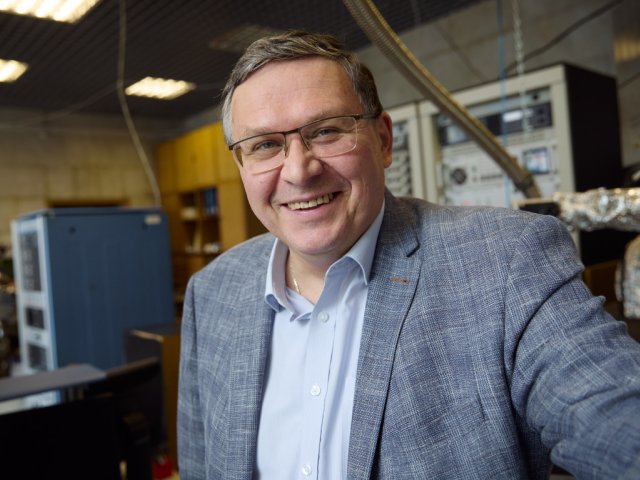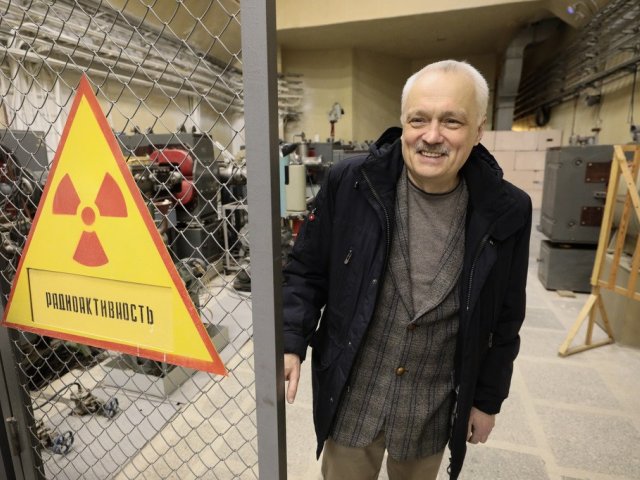Y.A. Orlov Paleontological Museum of the Russian Academy of Sciences is an integral part
of the RAS Paleontological Institute and one of the largest natural history museums in the world. The exhibition of the Museum is dedicated to the evolution of the organic world on Earth. Since 2016, the Museum has been headed by Aleksey Vladimirovich Lopatin, a Russian scientist and organizer of science.
History of the Museum
The history of the Institute and the Museum begins with Peter the Great’s founding of Kunstkammer in 1716. During this time, The Peter the Great Museum of Anthropology and Ethnography (Kunstkammer) of the Russian Academy of Sciences received bones and teeth of ice-age mammals of interest to the tsar, as well as other unusual findings. The amassed collections were later stored in the Mineral Office of the Academy of Sciences (the Mineralogical Museum).
In 1925, as the 200th anniversary of RAS was celebrated, the museum was split into two separate entities, the Geological and Mineralogical Museums. The Geological Museum, headed by A. A. Borisyak, housed the most valuable collection of paleontological material. At its core were the Osteological Department and the North Dvina Gallery which presented the skeletons of Permian vertebrates obtained by Professor V. P. Amalitsky during many years of excavations in the early 20th century.
The Institute had unique museum assets at the time of its founding. Exhibits were displayed in two halls with a total area of 1500 square meters, accessible to visitors at no cost. It was planned to be expanded further by incorporating findings of several extensive paleontological expeditions. Already in 1931, A.P. Hartman-Weinberg had prepared a general plan for the Museum. The plan was never carried to completion as the Institute had been relocated from Leningrad to Moscow. At this time there were many pressing questions related to the future of the Museum. On the one hand, there was an urgent need to find a suitable space in Moscow. On the other hand, it was necessary to think about the creation of a new exhibition that would be up to contemporary requirements of the science and museum studies.
The Paleontological Museum opened its doors in 1937 as the 17th session of the International Geological Congress was held. It’s location: Block 16, Bolshaya Kaluzhskaya Street (later renamed Leninsky Prospect), in the premises of Count Orlov’s riding house. The initial exhibition grounds were quite modest in terms of floor space, at 700 square meters. Nevertheless, many wonderful paleontological objects found their place in the Museum featuring specimens collected by several generations of Russian paleontologists, both in Russia and abroad.
During the Great Patriotic War, the Museum was closed, and a large part of its collection was sent to Almaty. Immediately after returning from the evacuation, the staff began to restore the exhibition.
The Museum once again opened its doors to the public in 1944.
This coincided with the appointment of Y.A. Orlov as head of the Institute. Thanks to successful field work and excavations, objects of interest were continuously added to the paleontological collections. It was increasingly difficult to find a place for new artifacts as the closely packed exhibition room became practically unsuitable for museum work. The museum had to be closed in 1954.
Academician Y.A. Orlov was convinced that the Museum needed a separate spacious building where its unique collections could be represented fully and would be available for study to a wide range of educated people, foremost, schoolchildren and students. In 1965, the Government of the USSR made the decision to establish a new Paleontological Museum and earmarked two million rubles to that end.
After his sudden death in 1966, the Museum was renamed after Y. A. Orlov.
The building was specially designed for the Museum by the State Project Institute of the
Soviet Academy of Sciences by a creative team under the leadership of Y. P. Platonov. It was approved in 1968 and subsequently awarded the State Prize of the USSR. However, construction only broke ground in 1972. It took almost two decades of effort by leading researchers from the Paleontological Institute and a creative group of architects, structural engineers, design artists and best animalist artists of Moscow to launch the new Paleontological Museum. Thanks to their joint efforts a unique museum complex was created, unparalleled worldwide.
The architecture of the red brick building housing the Museum resembles an ancient fortress with a central inner courtyard, around which there are four exhibition zones with four towers adjacent to them.
Long-term research expeditions carried out by the staff of the Institute in the former USSR, China, Mongolia and other countries have yielded the richest collections of paleontological material, a part of which are on display at the Museum.
Museum Exhibits
Four exhibition zones in six halls of the Museum successively introduce the visitor to the mysterious world of ancient animals and plants: from the most ancient to virtually modern species. Not only groups of organisms’ characteristics of a certain geological time, but also the most interesting faunal complexes appear before visitors in every hall.
The museum totals about 5 thousand square meters of exhibition floor space.
The rich and multifarious design of the Museum's interior contributes to a sense of tangible contact with the secrets of past epochs.
Monumental and graphic works by Moscow’s best animalist artists are displayed here. More than 5,000 exhibits are on display in six halls of the Museum.
The exposition opens with an introductory hall explaining the subject matter and objectives of paleontology, its history, major divisions, its interrelation with other sciences and practical significance.
The second hall – the Hall of Pre-Cambrian and Early Paleozoic period, introduces Earth’s earliest inhabitants as well as a huge variety of invertebrates and plants.
A smaller third hall is dedicated to the geological history of the surroundings of Moscow.
The fourth hall presents the oldest vertebrates and Late Paleozoic – Early Mesozoic fauna.
The fifth hall – the Mesozoic Hall – introduces aquatic communities of Jurassic and Cretaceous periods, featuring unique collections of dinosaurs and birds.
The final, sixth hall of the Museum shows a variety of mammals and unique Cenozoic fauna.






















